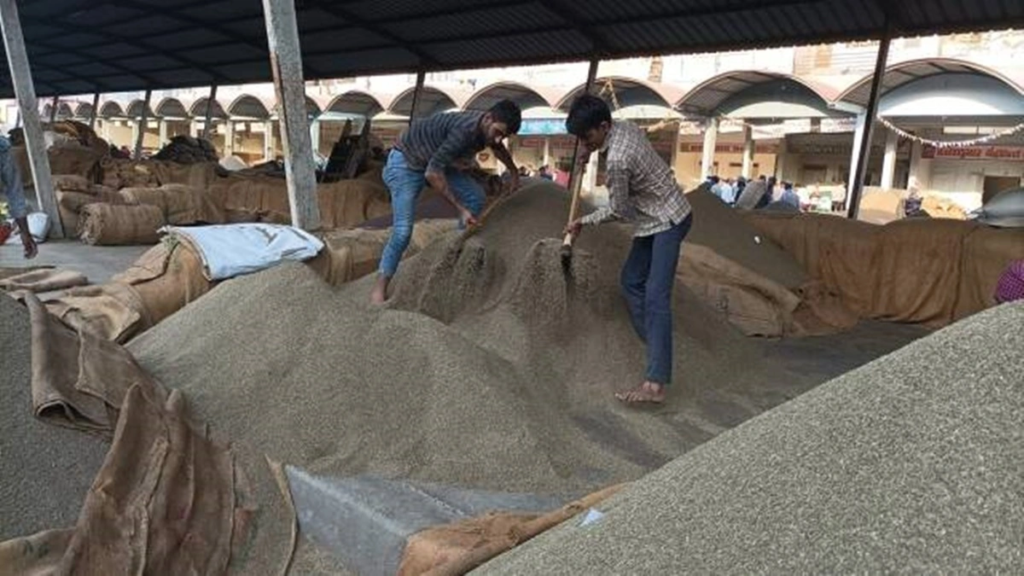The average mandi prices of cumin seeds (jeera) has risen 104% on year to a record `450/kg at Unja, Gujarat, the hub of trade in the commodity.
The average mandi prices of cumin seeds (jeera) has risen 104% on year to a record `450/kg at Unja, Gujarat, the hub of trade in the commodity.
Traders attribute the surge in prices to lower output due to unseasonal rains in March in Gujarat and Rajasthan, which contribute most of the jeera output in the country.
Retail jeera inflation was reported at 45.28% on year in April 2023 while prices of the spices variety rose by 23.26% in November 2022.
The prices have risen sharply since January, when harvest started to arrive in the market while the demand has been robust.
“Prices are expected to reach elevated levels for the next couple of months before any possibility of drop in prices,” Ankit Agarwal, director, Paharimata agro trading Limited, an Erode (Tamil Nadu) based spices trader, told FE.
Agarwal said that after reaching the highest level there is a likelihood of stability in jeera prices at the current level for the next couple of months.
Traders say that the average price of this spice seed crop was `200/kg in the 2021-22 season. However, prices have been rallying since December last year.
Jeera futures for August 18, 2023 expiry was quoted as high as `49,075/quintal on the National Commodity and Derivatives Exchange (NCDEX) platform on Monday.
“Despite the decline in production because of unseasonal rains, farmers have got the benefits of higher jeera prices this season,” Dilip Suphero, CEO, Chorad Farmer Producer Company, an FPO based in Patan district, Gujarat, said.
He said that farmers will be encouraged to take up more area under jeera next season.
Jeera is sown in October-November and harvested in February-March with March-May being the peak jeera marketing season.
As the cumin seed cultivation is sensitive to weather and disease, many farmers according to traders in Rajasthan and Gujarat have shifted to other crops such as cotton, mustard seed, groundnut, soyabean and coriander seed, thus reducing the production.
This year’s trade estimate put jeera production at 6.5 million bags as against the initial estimate of 7.5 million bags. Last year’s production was also lower at 6.6 million bags compared to 8-8.5 million bags in the 2021-22 crop year.
The future prices will be dependent on harvests from Syria and Turkey which are expected to arrive by August.

Source:financialexpress.com


